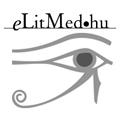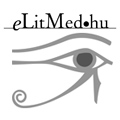The eLitMed.hu medical portal uses computer cookies for convenient operation. Detailed information can be found in the Cookie-policy.
Lege Artis Medicinae - 2003;13(04)
Content
[Human adult lactose intolerance: diagnosis and therapy]
[Human adult-onset lactase decline, characterised by a decrease in intestinal lactase enzyme activity is a biologic feature characteristic of the maturing intestine in the majority of the world's population. It demonstrates an autosomal recessive pattern of inheritance and it is regulated primarily by the rate of lactase gene transcription. Ingestion of high quantities of lactose-containing foods by patients with adultonset lactase decline results in intestinal symptoms, including bloating, distension, cramps, flatulence and diarrhoea. Due to the differences in the rates of gastric emptying and intestinal transit as well as the abundance of lactosemetabolising bacteria in the colon, the symptoms of lactose intolerance are often quite variable from persons to person. Lactose intolerance usually leads to self-imposed dietary restriction of dairy products, the main source of calcium intake, therefore it appears to be a risk factor for development of osteoporosis. Consumption of milk with solid foods can reduce symptoms in many individuals. Yoghurt containing active cultures are useful substitute for whole milk. Prehydrolized milk and lactase enzyme containing tablets are also available in the treatment.]
[Investigation of skin microcirculation in diabetes mellitus by laser Doppler flowmetry]
[The prognosis of patients with diabetes mellitus is mainly influenced by vascular complications which is partly due to the deterioration of the microcirculation. Laser Doppler flowmetry is a suitable method to investigate the complex disturbance that characteristic for diabetic microcirculation. This review gives a summary of the anatomical, physiological and theoretical backgrounds and the possibilities in diagnosis given by Laser Doppler flowmetry.]
[Actual questions of nitrate therapy]
[The nitrates are one of our oldest medicine. This article summarizes the general and the cardiovascular effect of the nitrates, the question of the nitrate tolerance and the ways of avoiding this. On the basis of the clinical studies the article describes the theoretical and practical results of the nitrate therapy in myocardial infarct and post-MI patients. It also summarizes the cardiac and extracardiac indications of the nitrates with special regard to acute cardiac conditions (acute heart failure, pulmonary edema) and analyses the side effects and the contrindications of the drug.]
[Principles of antibiotic use in clinical practice]
[There has been a very significant reduction in morbidity and mortality associated with the use of antibiotics since they were first introduced, but, there has also been a concomitant rise in resistance among pathogens over the past 50 years. Moreover, antibiotics are sometimes associated with adverse events and their use can account for a significant proportion of the cost of treatment of some conditions. To ensure the optimal use of antibiotics doctors should use the most appropriate antibiotics to stop the spread of infection. In choosing the appropriate antimicrobial agent for the therapy of a certain infection several key factors must be considered: the most likely identity of the infecting organism, the potential antimicrobial susceptibility of the infecting organism and the host factors that influence the response to therapy. This publication is designed to introduce the concept of appropriate antibiotic therapy and how it can minimise the emergence of antimicrobial resistance while ensuring optimal patient management.]
[Conservative treatment of female urinary incontinence]
[Conservative treatment - lifestyle interventions, physical therapies, bladder retraining and devices - should be included in the counselling of incontinent women regarding treatment options. Obesity is an independent risk factor for the prevalence of urinary incontinence and weight loss would appear to be an acceptable treatment option for morbidly obese women. Chronic straining may also be risk factor for the development of urinary incontinence. Further research is needed to evaluate the effect of heavy exertion/exercise, smoking, caffeine and fluid intake on incontinence and whether their cessation can alleviate or prevent this condition. Specific pelvic floor muscle training targeted at women with genuine stress incontinence may optimise effectiveness and for those women with mixed and urge incontinence, it may be appropriate to offer pelvic floor muscle training in combination with bladder retraining. There is insufficient evidence to determine whether electrostimulation is better than no treatment for women with stress, mixed, or urge incontinence while bladder retraining is an effective treatment in these cases. The anti-incontinence extraurethral or intraurethral occlusive, and intravaginal supportive devices may be employed for initial and/or long term management and be used prior to or simultaneously with other forms of conservative therapy and if after other forms have failed in order to postpone or avoid surgery or following unsuccessful surgical intervention.]
[Cervix and breast cancer screening in the districts of Hungary]
[INTRODUCTION - Life expectancy in Hungary has been increasing recently but in a geographically uneven distribution. The mortality trends has remained disadvantageous for cancer patients and also for the malignancies of cervix and breast that can be preventable with screening. The study aimed to describe the participation at the district level in the screening programmes as well as to investigate the relative role of health behaviour of women and of the health services in determining the screening success. METHODS - Age standardised relative screening participation rates were computed for 150 districts of Hungary using discharge reports of the outpatient services for cervical cytology and mammography. RESULTS - 20,12% of all 25-65 years old women was screened for cervical cytology during 3 years (1. July 1998. - 31. June 2001.) and 17,22% of all women aged 45-65 years participated in mammography in a 23 months period (1. July 1998. - 31. May 2000.). The results scattered in a certain fashion. Summarising the screening results, the highest participation ratios were observed in Bonyhád, Kiskunfélegyháza, Paks, Zalaszentgrót, Pécs while the lowest were in Csengeri, Mór, Nyírbátor, Sárbogárd, Enying districts. The screening performances did not correlate with each other and with the socioeconomic indicators (education, unemployment, income), apart from the significant influence of education on mammography participation rate. The emerging explanation is that the health behaviour was not important determinant of screening participation. In this case, the behaviour of target populations would have affected similarly both screening results resulting in a correlation. CONCLUSIONS - Consequently, the performances of providers responsible for screening organisation have been reflected in the observed screening rates. This result and the wide scattering of screening participation rates, which developed in spite of the uniform legislative-economic environment, emphasises the importance of regular monitoring of screening performance.]
1.
Clinical Neuroscience
Is there any difference in mortality rates of atrial fibrillation detected before or after ischemic stroke?2.
Clinical Neuroscience
Factors influencing the level of stigma in Parkinson’s disease in western Turkey3.
Clinical Neuroscience
Neuropathic pain and mood disorders in earthquake survivors with peripheral nerve injuries4.
Journal of Nursing Theory and Practice
[Correlations of Sarcopenia, Frailty, Falls and Social Isolation – A Literature Review in the Light of Swedish Statistics]5.
Clinical Neuroscience
[Comparison of pain intensity measurements among patients with low-back pain]1.
Clinical Neuroscience Proceedings
[A Magyar Stroke Társaság XVIII. Kongresszusa és a Magyar Neuroszonológiai Társaság XV. Konferenciája. Absztraktfüzet]2.
3.
Journal of Nursing Theory and Practice
[A selection of the entries submitted to the literary contest "Honorable mission: the joys and challenges of our profession" ]4.
Journal of Nursing Theory and Practice
[End of Life and Palliative Care of Newborns in the Nursing Context]5.
Journal of Nursing Theory and Practice
[Aspects of Occupational Health Nursing for Incurable Patients ]













